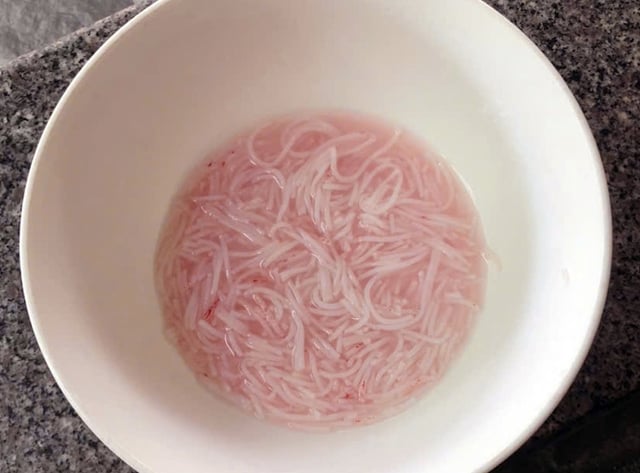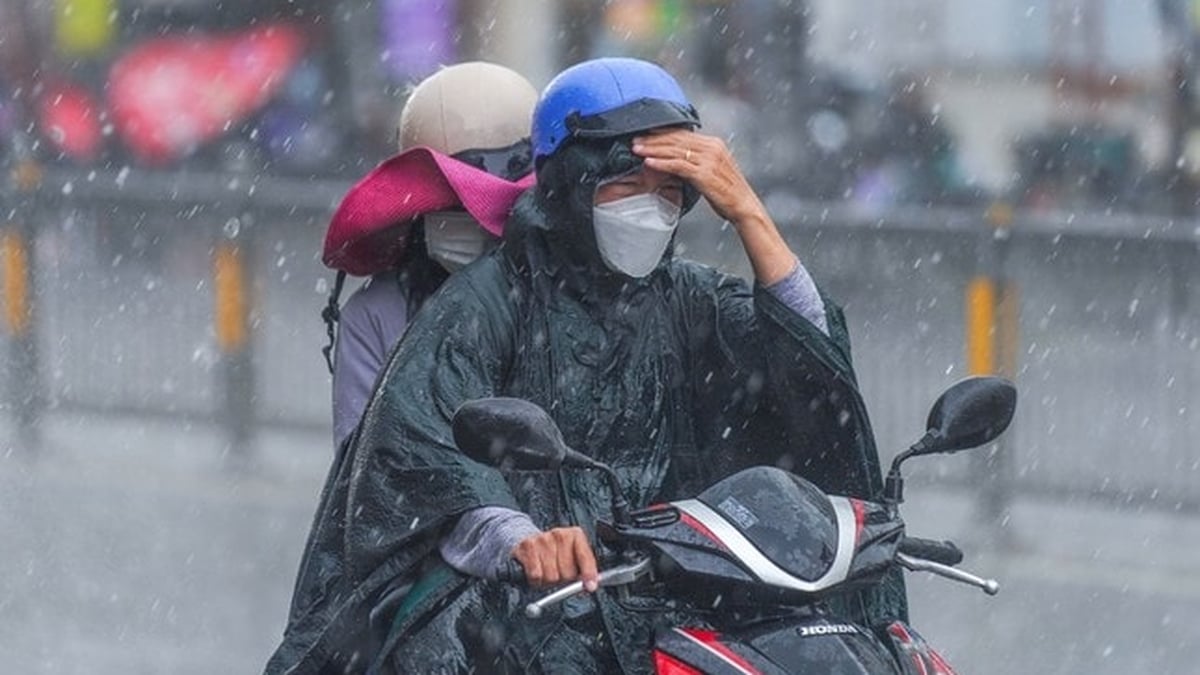Recently, the People's Committee of Hoa Xuan Ward ( Da Nang City) sent a sample of the noodles that had turned pink for testing to find the cause after people complained. Previously, a woman bought noodles at Hoa Chau market but discovered that the noodles had turned pink in the evening.
The noodles changed color from morning to night, everyone was scared, the information was shared a lot on social networks with many conflicting opinions causing concern. Some social network accounts said that the noodles were added with many preservatives, to make them tough... some people even worried that the rice was contaminated with chemicals. Meanwhile, many commenting accounts said that the noodles were mixed with shrimp paste and food coloring to post for interaction.

Vermicelli soaked in water turns pink
Photo: Nguyen Tu
With practical experience in working with preservatives and additives, Dr. Vu Thi Tan - lecturer of Inorganic Chemistry at the University of Technology said that according to the regulations of the Ministry of Health and international health organizations, in the process of producing vermicelli, there are groups of food additives allowed to be used, including:
- Preservatives: propionic acid and propionate, sorbic acid and sorbate, nitrate – help prolong shelf life, limit rancidity and sourness
- Antioxidants: ascorbic acid and ascorbate, BHA (Butylated Hydroxyanisole), BHT (Butylated Hydroxytoluene) – prevent oxidation reactions, stabilize product quality
- Bleaching additive: sodium metabisulfite – improves whiteness and product color
- Emulsifier (E471): supports starch structure, helps vermicelli noodles have better elasticity and shape
- Rice flavor: enhances the characteristic flavor of rice flour, enhancing the sensory value of the product
The Ministry of Health also clearly stipulates the dosage to be used, usually 1 ton of vermicelli/pho can use 1 kg of the above mentioned additives. In addition, there are additives that are prohibited to use such as: borax, fluorescent whitening agent (Tinopal), or even oxalic acid...
Dr. Tan said: "All of the above additives help the noodles last longer, not spoil, have a white color but over time do not turn the noodles pink when left at room temperature or in the refrigerator. So, is the pink color of the noodles due to a new chemical that the manufacturing facility added during the noodle production process? Personally, I find that a bit absurd, because if they were used, the facility would choose to buy common additives like the ones listed above."
Dr. Tan said that the pink color of the noodles could be due to infection with the bacteria Serratia marcescens. This is a type of bacteria that can produce pink pigment, discoloring meat, fish, starch, and even breast milk.
While waiting for the results from the authorities, consumers should not be too worried and rush to accuse the production facility of adding additives and chemicals. This will affect traditional noodle makers, especially those who only use rice and water, without using any additives.
Source: https://thanhnien.vn/thong-tin-bun-doi-mau-hong-gay-lo-lang-phan-tich-cua-chuyen-gia-185250711173040593.htm

































































































Comment (0)